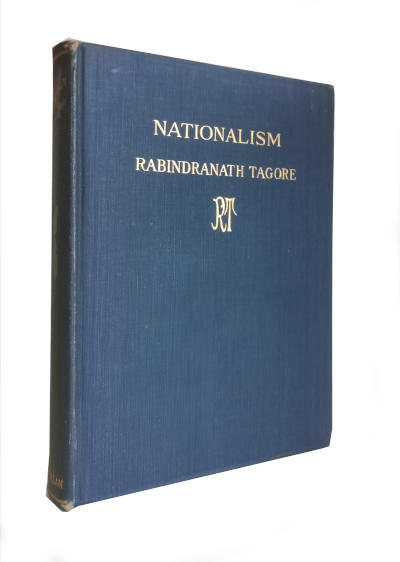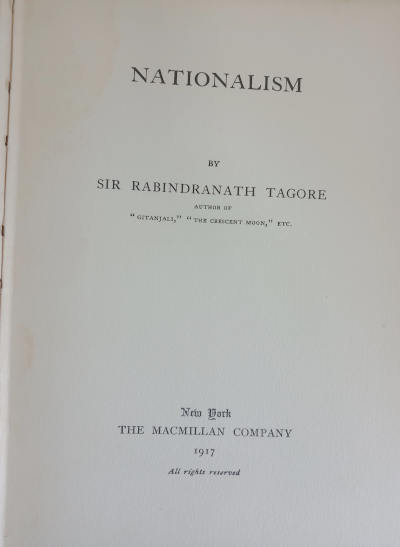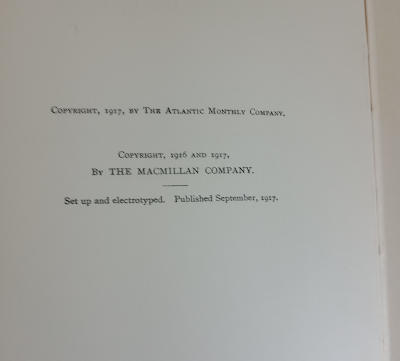Contains four essays by Nobel Laureate Rabindranath Tagore on nationalism, namely, “Nationalism in the West”, “Nationalism in Japan”, “Nationalism in India”, and “The Sunset of the Century”. Tagore was against nationalism and these essays, written in an informal style, contain his country-specific as well as his more general critiques of nationalism.
About Tagore’s views on nationalism (from Wikipedia):
Between 1878 and 1932, Tagore set foot in more than thirty countries on five continents. In 1912, he took a sheaf of his translated works to England, where they gained attention from missionary and Gandhi protégé Charles F. Andrews, Irish poet William Butler Yeats, Ezra Pound, Robert Bridges, Ernest Rhys, Thomas Sturge Moore, and others. Yeats wrote the preface to the English translation of Gitanjali; Andrews joined Tagore at Santiniketan. In November 1912 Tagore began touring the United States and the United Kingdom, staying in Butterton, Staffordshire with Andrews’s clergymen friends.From May 1916 until April 1917, he lectured in Japan and the United States. He denounced nationalism. His essay “Nationalism in India” was scorned and praised; it was admired by Romain Rolland and other pacifists.
Visits to Persia and Iraq (in 1932) and Sri Lanka (in 1933) composed Tagore’s final foreign tour, and his dislike of communalism and nationalism only deepened. Vice-President of India M. Hamid Ansari has said that Rabindranath Tagore heralded the cultural rapprochement between communities, societies and nations much before it became the liberal norm of conduct. Tagore was a man ahead of his time. He wrote in 1932, while on a visit to Iran, that “each country of Asia will solve its own historical problems according to its strength, nature and needs, but the lamp they will each carry on their path to progress will converge to illuminate the common ray of knowledge.”




